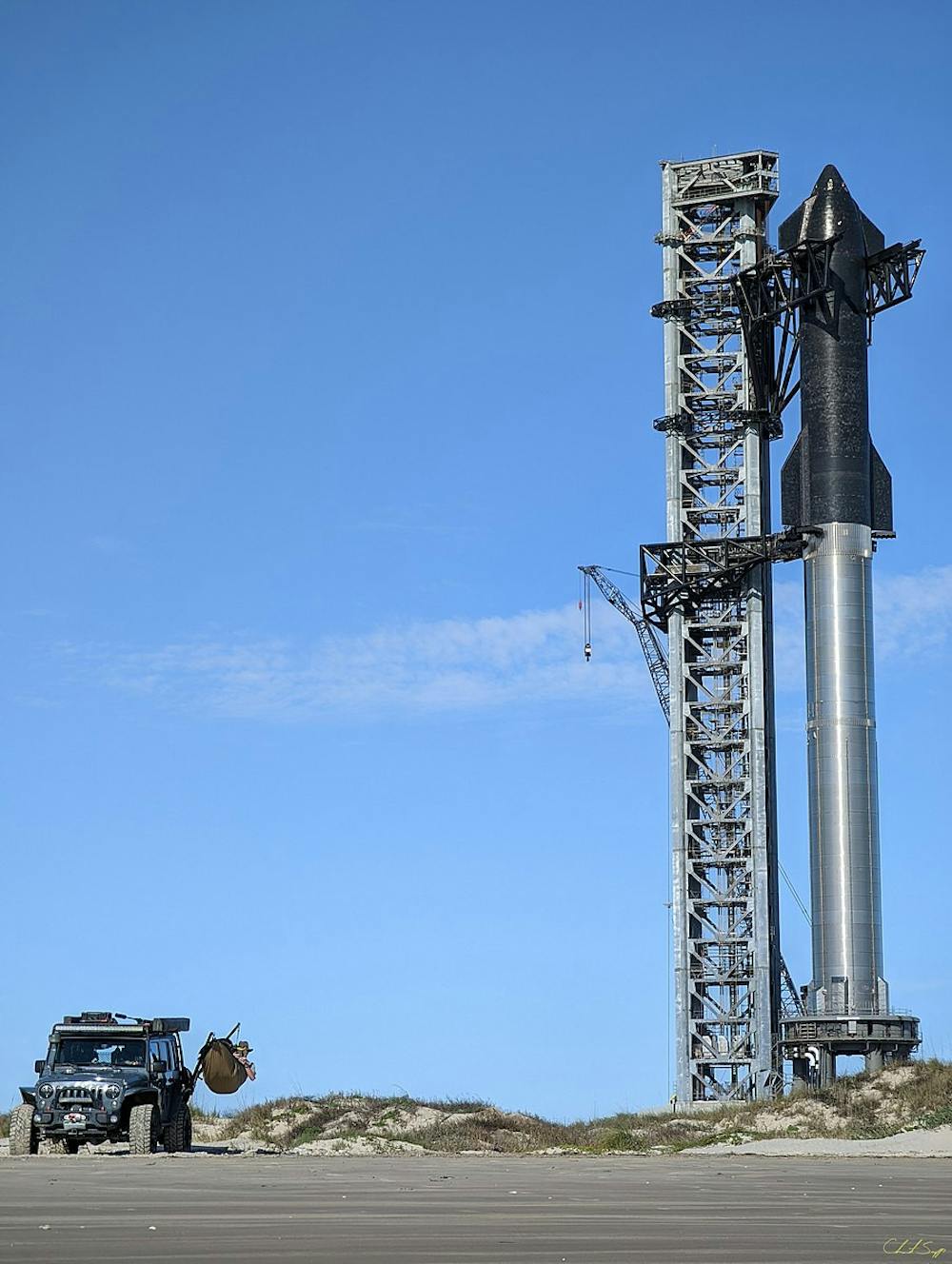By Gauri Patel
Staff Writer
SpaceX’s Super Heavy-Starship, the most powerful launch system ever developed, took off on its second test flight from the coast of southern Texas on Saturday. Although the initial part of the mission was a success, the second-stage of the launch vehicle ultimately activated an onboard self-destruction mechanism that caused itself to explode in the air.
Collectively referred to as the Starship, the launch vehicle consists of two stages: the Super Heavy first-stage, or rocket, and the Starship second-stage, or spacecraft, powered by the Raptor Vacuum engines. Both stages are intended to be fully and rapidly reusable, with the full launch system designed to carry crew and cargo to the Earth’s orbit, the Moon, Mars and beyond, according to SpaceX.
SpaceX is counting on the launch vehicle to vastly expand its fleet of Starlink internet satellites and to eventually power low-cost government and commercial flights to other planets.
The launching came nearly seven months after the Starship’s April 20 inaugural test flight, which ended in a spectacular conflagration four minutes after liftoff, triggered by multiple first-stage engine failures and problems separating the Starship from the Super Heavy. This launch system reached a maximum altitude of 24 miles, well below the 50-mile altitude considered to be the boundary of space before tumbling down to Earth engulfed in flames.
This launch, viewed as a success by SpaceX, demonstrated the significant improvements made since the first launch, according to The Washington Post. The second-stage made it to space, reaching an altitude of 93 miles, considerably farther than the 24 miles reached in the last test flight. All 33 of the booster’s engines ignited, whereas last time, six of them failed. Additionally, the onboard flight termination system, designed to destroy the rocket if it veers off course, appears to have worked in a timely manner. In the previous launch, there was a delay of about 40 seconds.
Despite these successes, the second test flight did not complete its planned objective to send the second stage most of the way around Earth ending with a splashdown targeted in the Pacific Ocean near Hawaii, according to The New York Times.
The mission ran smoothly at first, with the two stages of the spacecraft successfully separating about two-and-a-half minutes into the flight. All 33 Raptor engines powering the first stage fired throughout the boost phase of the flight, and a new "hot-staging" system, in which the Starship's engines ignited before separation, worked as designed. After separation, the first stage executed a flip maneuver in preparation for controlled splashdown in the Gulf of Mexico; however, it suddenly “experienced a rapid unscheduled disassembly,” as SpaceX referred to the explosion in a statement, possibly due to stresses imposed by the hot-staging technique.
The second stage, or the Starship, continued heading toward orbit for several more minutes, propelled by six Raptor engines. About eight-and-a-half minutes into the flight, SpaceX lost contact with the second-stage, which it declared lost. The company believes the rocket’s automated flight termination system was set off after it lost the signal.
It is not yet known why the second-stage booster’s automated flight termination system was activated or why the first-stage apparently failed. In a statement, the Federal Aviation Administration said it will be involved in every step of the mishap investigation process and will approve of the corrective actions SpaceX must take to prevent future issues.
“With a test like this, success comes from what we learn,” SpaceX said in the statement after the most recent launch. “And this flight will help us improve Starship’s reliability as SpaceX seeks to make life multiplanetary.” It added that it is reviewing data from the previous launch to make improvements for the next flight.
Getting the Starship flying on a regular basis is critical to NASA's Artemis moon program, according to CBS News. In 2021, NASA gave SpaceX a $2.9 billion contract to develop a variant of the Starship to carry Artemis astronauts to the lunar surface within the next two or three years. Multiple successful flights will be required before the agency will deem it safe to put astronauts aboard, and the contract requires at least one unpiloted lunar test flight before astronauts will make a landing attempt.
SpaceX said the explosions would prove useful in adjusting future builds of the Starship spacecraft and “is already working final preparations on the vehicles slated for use in Starship’s third flight test.”







